COWRYS
COWRY SHELLS TOP QUALITY, WIDE SELECTION, COMPETITIVE PRICING
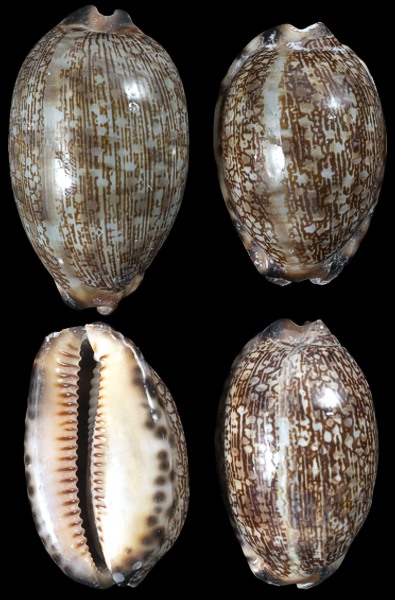
Arabic Cowrie
- The shell outline is oblong or nearly elliptical. The spire is barely distinguishable dorsally. As is the case in other Cypraeidae, the aperture of the shell is very narrow, and relatively long. Both the inner and outer lips are ornamented with arrays of small teeth. The dorsal side of the shell is convex or bent, and never depressed. The dorsal mantle groove (the line or area where the two mantle flaps meet when they are fully extended) is dissimilar to the shells general color pattern, and thus easily perceivable. The lateral margins are calloused, mainly towards both the posterior and anterior ends. The ventral side of the shell is typically flattened, and sometimes slightly concave.
- As is also the case in the shell of most other Cypraeidae snails, the shell surface is notably effulgent (shiny), as if it had been deliberately polished. The color is generally cream to light fawn dorsally, with shades of brown. The ventral side of the shell is colored cream to grey. The labral teeth are reddish brown and white towards the columella. The common name arabian cowry is based on a dense and irregular pattern of thin longitudinal brown lines which are sometimes interrupted by empty spaces, giving an appearance that is considered to be similar to that of Arabic script. Cypraea arabica is distributed widespread in the Indo-West Pacific. This sea snail dwells under boulder and stones, and also shelters in caverns of the outskirts of coral reefs. It lives in low intertidal zones to shallow sublittoral depths. Cypraea arabica is mainly active during the nocturnal period.
- F1-7
- One Arabic Cowrie shell 1 1/2 plus inches..... .16
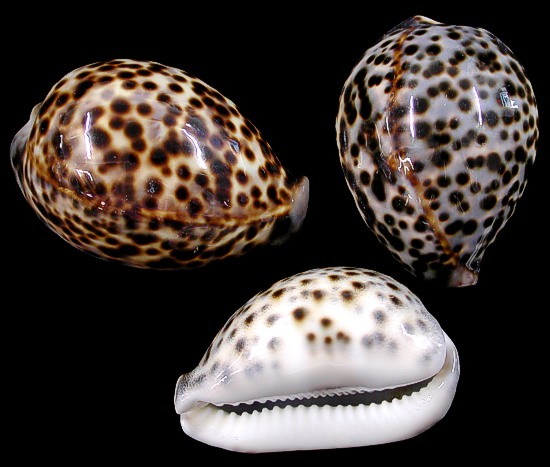
TIGER COWRY SHELL
- Description. scientific name is Cypraea tigris Linnaeus, Family is Cypraeidae. It is a large heavy shell with a flat or concave base. The teeth on outer lip are broad and short, while the opposite teeth are thin and longer. The exception are the four lowest teeth, which are larger and shorter. The color pattern is set against a white background color, occurring in two layers. The underlying layer is bluish gray, the upper layer is reddish to dark brown. These patterns on both layers have numerous spots and blobs. The spots of the upper layer often is surrounded by a yellowish orange color. There have been on rare occasions an all black shell discovered. These shells are gastropods (mollusk that creates a single shell)and are fairly common in the Indo-Pacific region. These species are nocturnal. Hidden in the coral reefs during the day and out feeding at night primarily on algae.
- E1-2-6
- One Tiger Cowries shell 2 plus inches..... .70
- E3-4-5-6
- One Tiger Cowrie shell 3 plus inches..... $2.10
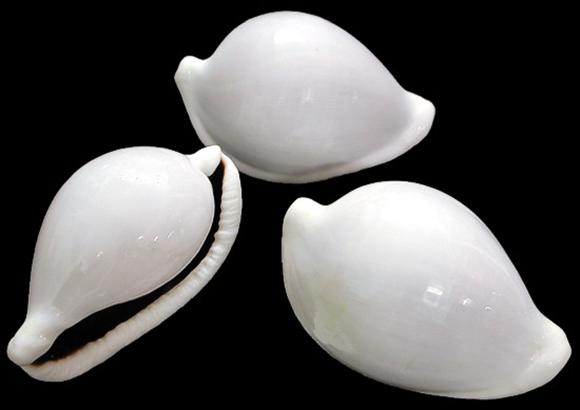
EGG COWRY SHELLS
- The Egg Cowrie is a Gastropod. The term gastropod means stomach footed, a mollusk with a head bearing tentacles and eyes and a foot; a one piece shell. These are egg-shaped shells that are larger than many true cowries. The shell is smooth and shiny. It's thickened outer lip has a puckered inner edge and is unevenly toothed. They are always white on outside; with a chocolate-brown aperture. Historically, egg cowries have been popular for personal adornment; ancient South Pacific mariners often used these shells to decorate canoes.
- Habitat. Egg Cowries prefer spongy soft bodied coral; abundantly found from the East African coast to Southern Japan and south the to Northern shores of Australia and New Zealand.
- C1-2-6
- One Egg Cowry Shell 2 plus inches...... .80
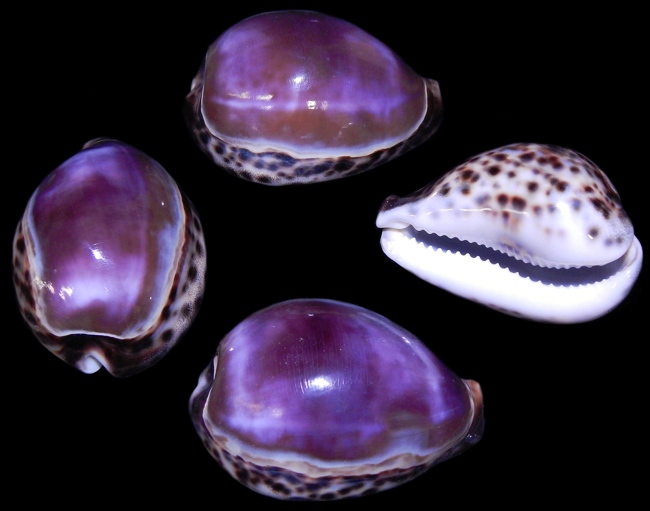
TIGER COWRY PURPLE TOP
- Cypraea Tigris - commonly know as the Tiger Cowry. It feeds on polyps on coral reefs. It is most commonly found under the coral rocks in the Indo-Pacific region and also around the Great Barrier Reef in Australia. The exterior of the shell is smooth and polished because of the covering that the animal has, called a mantle, that wraps around the entire shell. Some cultures see cowry shells as a symbol of fertility and are often offered to a bride as a gift to ensure fertility. The outer shell is brown and black spotted, similar to a tiger, but the purple resides in a lower layer. To reach the purple of the shell, they are dipped into an acidic formula. Tiger cowries are also used in carvings like cameos due to this uniform color under the patterned shell.
- JJ0-7
- One purple Top Cowry 3 inches...... $1.29
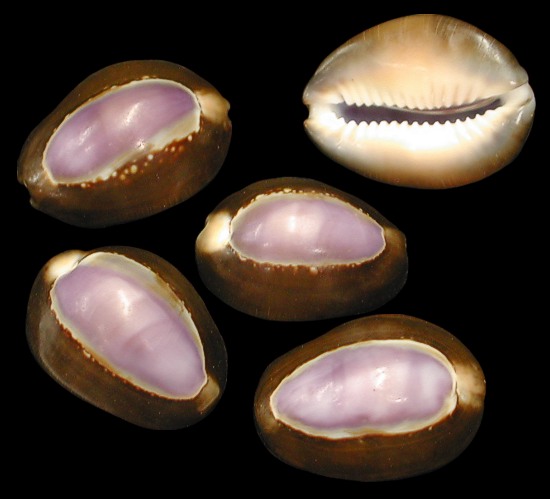
TIGER COWRIE SHELL PURPLE TOP
- Cypraea Tigris - commonly called the Tiger Cowry.
- M1-7
- One Purple Top Tiger Cowrie shell 1 inch or less...... .17
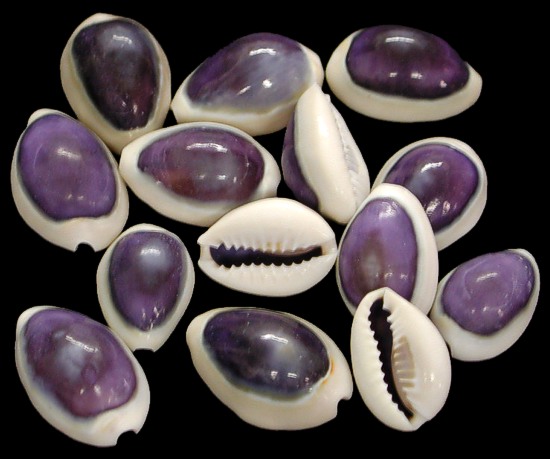
- M2-7
- One Small Purple Top Cowrie shell 1/2 inch or less...... .10






No hay comentarios:
Publicar un comentario